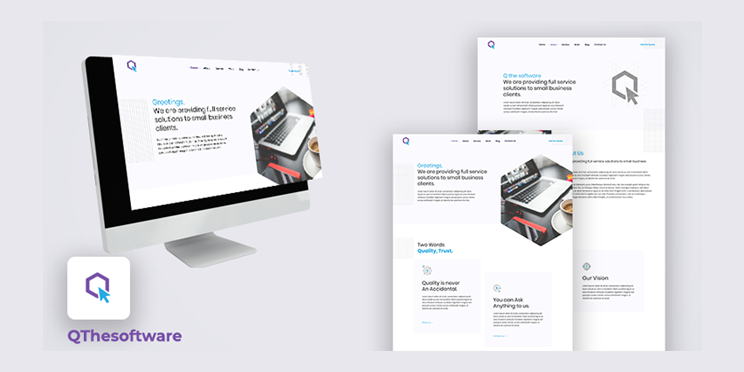Owing to increased proliferation of smartphones to the remotest corners of developing countries, coupled with the significant drop of data prices across the world, the numbers of users on web have increased exponentially, over the last few years. This rise in the users of the internet has also contributed immensely to the growth of many businesses through mobile application development.
The growth in the number of users has also brought to the fore a variety of problems that they often face. Some of the key problems faced by customers include the difficulty of accessing the Mobile Web. While people may not always be able to access desktop versions of the website, it is also likely that a business might need complete mobile application development, and even if it does, it is very difficult to get people to download an application on their phones.
Recently introduced technologies like Progressive Web Applications (PWA) and Accelerated Mobile Pages (AMP) carve out the perfect middle ground for giving users the features and swiftness without actually needing mobile application development services.
How are the two of them different and what do your business requirements support more? Let’s find out!
Progressive Web Applications:

With Progressive Web Applications, users can avail an app-like experience through their phone browsers. The user interface of these web-based applications follows the suit of standard mobile application development practices when it comes to interactions and navigation’s. The USP of this technology is that the user doesn’t need to install this module, despite serving the experience of an app. (According to a survey, nearly 20% of the users drop a service every time they are asked to download an application).
Further, there are provisions with which the user can download bookmarks to their mobile phones. Simply put, the user can download an app icon for the website, without having to actually download the app. When opened, this “app” will be accessed via the browser itself. The technology has several advantages as well as disadvantages, which an organization must know before venturing into Mobile Application Development:
Advantages:
- Responsiveness: A PWA is Responsive with compatibility across devices like Desktop, Tablet or Mobile Phones.
- Security: PWAs are accessed through https, making them secure and immune to the invasion of privacy.
- Lightning Quick: Made with a design concept known as Appshell, PWAs load content at a lightning pace, making it favorable for the users.
- Low Maintenance for Users: Eliminating the need to download a mobile application, PWAs are shareable through links and further, also offer the “bookmark” feature, that lets the user pin the PWA to their home screen, thereby serving a true app-like experience.
- Accessibility: PWAs can be accessed through a browser of the user’s choice.
Although in principle, the concept of a Progressive Web Application sounds very appealing, there are reasons why they simply cannot replace Mobile Application Development.
Disadvantages:
- One of the key shortfalls of a PWA is its inability to access a device’s hardware capabilities which is an essential requirement for certain businesses.
- Companies cannot eliminate Mobile Application Development in favor of PWAs as there are several restrictions when it comes to accessing native applications and features such as Call/SMS, Camera, Calendar, and further, hindrances when it comes to using hardware components such as sensors.
- Owing to the increasing adaptation of logging in using popular mailing platforms or social networks like Gmail or Facebook, it is difficult to use PWAs as they do not support cross-app logins.
These are some of the important pointers that business-owners must keep in mind before deciding whether or not to go for mobile application development.
Accelerated Mobile Page:

Have you seen a flash-like icon next to your search result when searching Google on your browser? The said icon represents AMP, an Accelerated Mobile Page. Accelerated Mobile Pages are a technology developed by Google with an aim to let developers create pages that are loaded almost instantly, as compared to regular HTML coded pages. The primary aim behind the development of this technology is to reduce the loading time of the website by removing unnecessary clutter on a website while conveying the most important information. If used appropriately, this technology can hand your company a significant competitive advantage.
Owing to their ability to convey only the essential information, AMPs should be a great way to go forward for websites that deal with content. At the same time, their USP makes them very difficult to use for eCommerce websites, as they require users to engage with the website. Just like PWAs, AMPs also have their own set of pros and cons, which we shall look at below:
Advantages:
- AMPs are significantly faster than their conventional HTML counterparts. For websites that aim to serve their customers with solely content, and not a visual appeal, this technology is nothing short of a boon!
- Google will never sacrifice its advertising revenue. Their homegrown technology, Accelerated Mobile Pages support all ad formats.
- Adapting to this technology will surely boost your SEO rankings, as will the chances to appear on Google’s offerings like Google News, leading to a substantial increase in visitors and organic growth of traffic.
Disadvantages:
- With little engagement with users at best, eCommerce websites are better off with conventional mobile application development services. Accelerated Mobile Pages are hardly of any use for eCommerce websites, apart from their blogs section.
- JavaScript is not allowed on AMPs thereby limiting the styling options of a web page.
- AMPs are not equipped to track a user activity which severely impacts an organization to study their customer behaviors.
PWAs vs AMPs:
Although both PWAs and AMPs aim to provide lightning-quick services to end users, they have several functional differences. AMPs aim to be able to load sites quickly on mobile, PWAs aim to offer customers an app-like experience without having them actually download one, making them suitable for different objectives. Although both of them are great technologies, they lack some key features and thus have a long way to go before effectively substituting mobile application development services.
For companies exclusively dealing with delivering content, and thrive on readership, Accelerated Mobile Pages are a wise route to it as they serve the end users almost instantly. Additionally, Google search results are also more prone to return AMP powered web pages, leading to higher traffic on the web.
On the other hand, PWAs are essential for eCommerce websites that can reach out to their customers by delivering them experience exactly that of a mobile application. Further, as technology progresses, PWAs are also expected to integrate hardware functionalities like NFC, Bluetooth, leading to even more utility for businesses.
Do you have an idea for a project?
Our Company Global Vincitore is a leading mobile app development company in north carolina, experienced in both AMP and PWA apps development. If you are ready to start your project, feel free to get in touch.
Frequently Asked Questions:
Q. What is AMP App?
A. Accelerated mobile pages to create better, faster experiences on the mobile web.
Q. Is it possible to load a PWA from AMP?
A. Yes, It is possible.
Q. Is PWA good for SEO?
A. It is helpful to provide fast & secure great user experienc. Which is one of the main key element in SEO as well. So there are no direct benefits of SEO by using PWA app, but indirectly it helps in your SEO strategy.
Q. Is PWA responsive?
A. Yes. PWA apps incorporate responsiveness and work seamlessly across the board.
Q. Why we need PWA?
A. It is best of web browsing and mobile apps. It also realiable, load instantly, responsive, working seamlessly across devices and all browers with a higher engagement rate.




